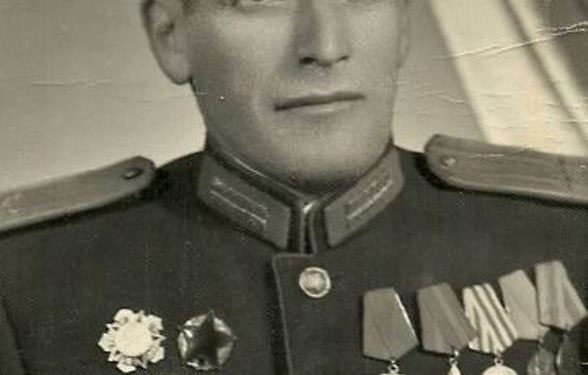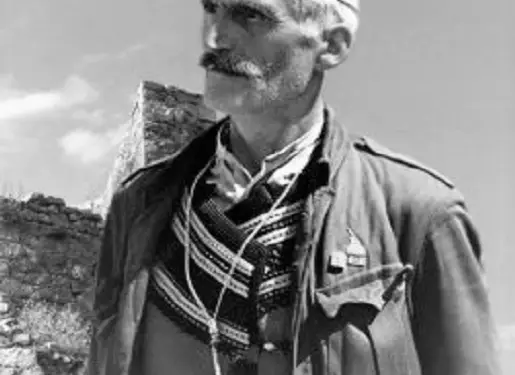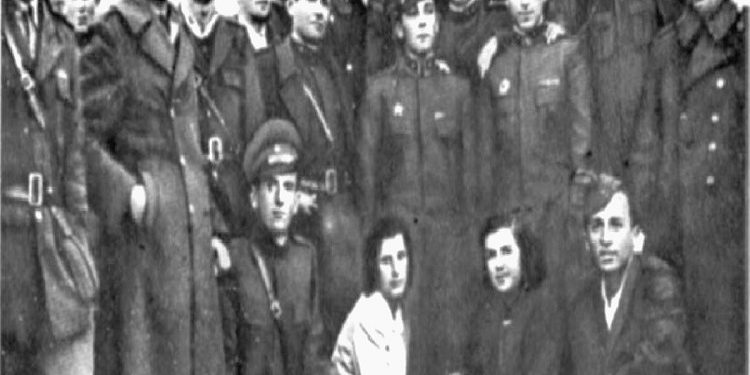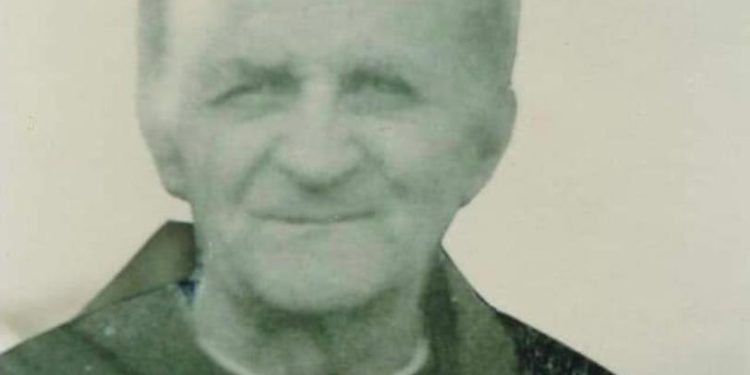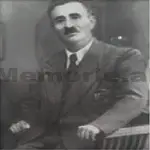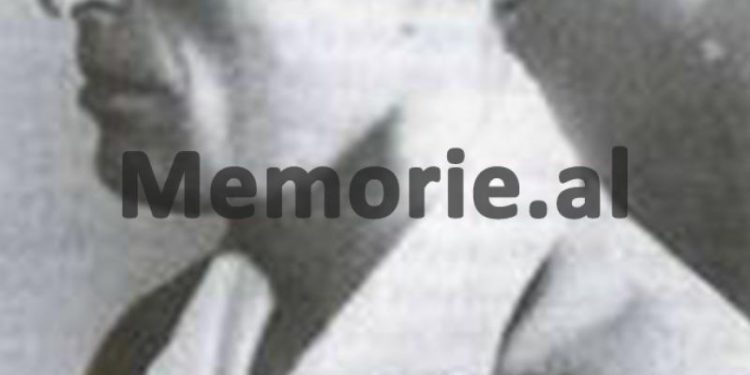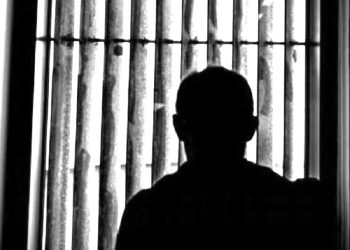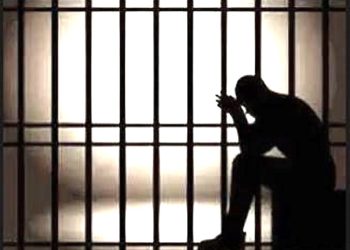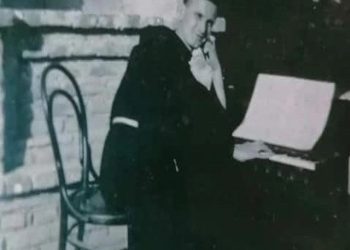The sixth part
Memorie.al/ publishes a study conducted by AIDSSH (Authority for the Information of Former State Security Documents), entitled; “DISAPPEARED – INSURANCE IN OWN WORDS”, 19 INSURANCE BRANCHES, 3299 LIFE, 1 HISTORY’, in which the ‘History of State Insurance’, which belongs to a period of time from 1943 to 1991, is used. where 19 branches of the State Security are included, from the districts: Durrës, Kolonje, Burrel, Krujë, Lushnje, Dibër, Gramsh, Pogradec, Korçë, Tepelën, Elbasan, Lezhë, Saranda, Gjirokastër, Vlorë, Shkodër, Tropojë, Skrapar, Librazhd and Tirana.
Entry
INSURANCE IN OWN WORDS
“Those who think that communist regimes are the work of criminals only, overlook a fundamental truth: criminal regimes were not formed by criminals, but by convinced enthusiasts…”!
Milan Kundera, “The unbearable lightness of being”
Continues from last issue
VLORAS
The history of the Security for Vlora begins with events that happened during the National Liberation War, with murders in front of the museum mosque, while it darkened page after page with other lives, which were extinguished in the homes of opponents of communism, or in the homes of sympathizers of communism.
In addition to the assassinations, capture and execution of those it considered spies and traitors, the guerrilla units collected information for those who would be executed in the future. Communists were often among them, as happened with the annihilation of Haki Xhelo and Qani Shena, who were eliminated. After the liberation of Vlora, the process that State Security calls; “cleansing the city and the province of war criminals and foreign agents”. In just two months, from October 15, 1944, until the end of December 1944, 327 people were arrested, of which 213 were convicted. For three years, 1945, 1946 and 1947, State Security counts 2952 files, for convicts, fugitives, suspects, exiles and foreigners and 96 executed.
Murder in the waiting room
One of the methods that the guerrilla units of Vlora used to kill their opponents was an invitation to dinner. After they found their sympathizers, they instructed them to invite for dinner the opponents who were their friends, to propose to them that they become partisans, and when they refused, “they captured him, tied him up and, tied like that, took him out of the city and they took him to the partisan detachments, and after they tried him, they shot him.”
But the murders were also done in the houses of the opponents of the communists. Insurance accepts such a case in the History of Vlora. The merchant Frapi Piçini, accused of being a spy, was assassinated by a partisan, from which he escaped. He no longer left the house, which was guarded 24 hours a day and Picini decided to sell everything and flee to Italy. The scenario that traps him inside the house is simple for Security. One of the members of the guerilla unit, who was a friend of his, went to his house to tell him that an uncle of his was interested in buying his property. Frap agrees, and the friend returns with an assassin disguised as an uncle. “At the time when they were going to sit in the waiting room, this hated spy was killed with a knife, without even being dictated to by family members.”
Disguising a fratricide
Not Qirici, had been on the run since the time of the War. He used to receive food aid in the Dukat area, so in order to catch him; State Security launched raids in the village. Among those arrested was his cousin, S.G., who, according to the investigator, as State Security notes; “He frowned that he was the weakest and asked you persistently to hand over or kill the criminal Not Qirici. S. G. accepted and was released, giving him 15 days. On the 14th day, in the evening, he sent a letter to SEMP of Vlora, (People’s Protection Section, the predecessor of State Security), to surround the place.
After coming close to the ambushes, Noti is killed by S himself,” State Security writes. Although fratricide was widespread and prevalent in the country, State Security ironically writes that; “in order not to cause fratricide and enmity between the tribes of Dukat, according to the agreement made earlier, all the ambushes would explode in fire and in this way, the killing of Noti by his cousin, S.G.”, was masked!
Arrest with false evidence
Could friendship with the State Security be bought with eggs and village chickens?! His history, written by his employees, suggests that yes, it could happen. Rexhep Osmani was arrested with false information, which was sent to the Security by Agja Lami, their associate. Osmani accused them of defamation, filing a complaint.
“Only when Agja Lami admitted this theft with her own mouth, it was believed that their complaint was right. After it was fully proven that the arrest of Rexhep Osmani and his friends was based on false evidence fabricated by Agja Lami and his group, they were released as innocent and their place in prison was taken by Agja Lami’s group is written in the history of Vlora, noting that Lam was sentenced to death by firing squad. In the analysis that State Security himself makes, he notes that; “this was the only scandalous case for the State Security bodies”.
According to him, the reasons that led operative Agja Lami to a hostile path were the lack of control over him, the sick familiarity between him and his superiors; “that there were occasions when eggs and chickens were brought to them from the village”, etc.
“In the period 1950-1955, the bodies of the Security in Vlora claim that; “they managed to discover, hit, unmask 34 Yugoslav emigrants, for espionage, escape, agitation and propaganda activities, between them and UDB cadres, such as Franc Jozhe, Blako Stankovic and Mujo Drosevic, who were sentenced to be shot”.
In the Vlora region, at the beginning of February 1947, there were:
300 prisoner files
296 fugitive files
2170 files of suspicious elements
96 files of the executed
20 files of internees
70 files of suspicious foreigners
In total, the directory of SEMP Vlorë had created a regular record of 2952 files. Out of 2952 files, 96 files are of the executed.
SHKODRA
The MP is killed with an anti-tank weapon; the body is “buried”!
In the most famous image of Colonel Haxhi Hajdari, the chest is covered by ranks, while the gaze seems to foresee a tragic fate. Former commander of the first partisan detachment of the District of Shkodra, deputy of Malësia in the People’s Assembly and commander of the Border of the Voluntary Forces of the district, the first crisis with the regime was marked in 1945, with the opposition of terror even against the families who had sheltered during the War.
He finalizes the crisis, when he opposes the collectivization of deep mountain areas, proposing that it be on a voluntary basis, in a party plenum at the “Migjeni” theater, where Mehmet Shehu also participated. After that, he was called to a meeting in Tirana by Enver Hoxha. After the meeting, a friend tells him that it is better to leave Tirana urgently. Three months later, on March 15, 1963, a friend comes home at midnight and advises him to escape; otherwise he would be in prison. He was officially accused of being a Yugoslav agent.
On April 7, 1963, through co-workers put under pressure, State Security learned that he was hiding in Rrjoll. That same night, State Security starts surveillance near the cave between Rrjolli and Repishti. At dawn on April 8, at 05:30, the Security forces were able to spot Hajdar and his friend, Nosh Kola. As they refused to surrender, the shooting began. The Security itself narrates the event in this way: “Several hand grenades were seen flaming towards the cave, which exploded inside the cave, and before the noise caused by the explosion of the grenades had passed, the cave was shot with 4 anti-tank shells 82m/m , the bursting of which marked the end of these traitors.
From the later verifications, Haxhi Hajdari was found with a severed head, while Nosh Kola was not even recognized as a human being.” State Security uses the term “burial” and not burial for dead bodies, when it says “Their bodies were taken out of the cave and buried in the outskirts of Shkodra”!
The fall of the insurgent Preng Cali
With the arrival of the communists in power, the “cleansing” operations began, where the opponents of the Highlands, such as Preng Cali, were to be eliminated, in order to make them “traitors”, otherwise, he was also one of the insurgents of the movements of the years before the declaration of Independence , fighter against the Serbs who wanted to expand the borders, armed opponent of the border of 1913 and in 1944, clearly anti-communist.
The history of the Security of the Internal Affairs Branch in Shkodër documents telegraphically, that the order was given by the General Command of the National Liberation Army. “The attack would be launched in three directions, on the flanks and on the back of the treacherous forces. It was the first days of February, the temperature reached minus 10 degrees. Three partisan columns left Shkodra, settling in Shkrel, Dedaj and Tuz, Albanian villages on the borders of the Yugoslav state.
During the night of February 6 and 7, the operation to dispose of the reaction debris began. The chief traitor Preng Cali, together with 14 traitors, was captured alive in the cave of Vukli. During the Kelmendi operation, 44 enemies were killed, while 18 others who were leaders of the reaction were captured alive, given a military trial and shot.”
The social democratic educator
While waiting to be shot at the Internal Affairs Branch of Shkodra, Mark Shllaku had told his wife that he would carry a tin with him, so that she could find his body to bury. He kept his word, but his body was never found, even though his wife searched for him until she closed her eyes. But the History of Security Shkodër does not tell the other side of the event. According to him, in May 1948, “the citizen from Shkodra, Mark Shllaku, receives a letter from his brother, Hilë Shllaku, who fled the country together with Ndoc Mirakaj, the son of Col. Bibë Mirakaj.
Through that letter, he was instructed to continue to stay in the city and not to stop the hostile work against the popular government. Among other things, he had to gather around him as many dissatisfied elements as possible and organize them into a group, which would take the name “Social-Democratic Party”. Mark Shllaku left his wife, Angje, and daughter, Juli, 8 years old, with the bequest that they would not forget him. Despite the efforts, the remains of Mark, who was shot in 1948, could not be found even by his daughter, who, with her father’s pledge, closed her eyes a few days ago, at the age of 80.
For Postriba / Jup Kazazi
“The reaction in the province of Shkodra extended the activity to the whole of Northern Albania. Without reservations, the reactionary Catholic Clergy also works in this direction, with the encouragement and support of the Anglo-Americans and the Vatican. Their goal was to attack and occupy Shkodra with the armed forces, to create a reason for the legal intervention of the Anglo-Americans in our country”.
Religion as an “intoxicating tool”!
Hostile activity through espionage, tendency to escape, tendency to organize, tendency to terror, agitation and propaganda. With these accusations, the State Security bodies opposed the Clergy in Shkodër, through a series of agentural-operational measures, which led to their attack. According to the words of the Security, “after 1967, as a result of the revolutionary measures taken by the Party in the fight against religion, which had served as an intoxicating tool for years, and backward customs, the religious centers were generally destroyed… while the priests and the hoxhallars, were organized in different jobs”.
“The system”, often the cell, “as a response to the stinging and multifaceted hostile activity of the reactionary Catholic Clergy, in 1967, the State Security bodies in the district, arrested 11 priests, 3 of whom were shot and 7 others were unmasked publicly, in front of the people”. Security further adds that Monsignor Ernest Çoba (head of the Catholic Church), Zef Kolë Hardhia and Kolec Gaspër Toni, Dom Mark Hasi, Pjetër Geg Luma and Patër Alek Baqli, Dom Ndrekë Kakarriqi, Dom Martin Trushi, Dom Nikollë Bushati, admits that “combinations” were made and “therefore, most, if not all, gave you to the people’s court”.
“This war”, State Security admits, “continued always starting from the right conclusions of our Party that, even though the priests and monks were removed from their functions, even though some of them were shot and imprisoned, still, the religion of it has deep roots”.
Gramshi
“From the depositions of these traitors, it turned out that the failure of the encirclement of the gang (of Hamit Matjani) was that in September 1947 in Vine, their associate S.H., who was a popular policeman in this N/Section, was notified and based on the depositions police, was arrested and at the end of the investigation, all the defendants received the deserved punishment. The main bandit, Riza Kishta, died in prison during the investigation.
“In the year 1944-1948, in the district of Gramsh, 48 war criminals were caught and destroyed, who acted as a gang within the district and there were 6 in total, where: it was that of Abaz Ermenji with 9 members, the gang of Abaz Potomi from the district of Skraparit, with three members. In 1946, fighting took place in this gang and in the end, one of its members was killed, while two others joined Abaz Ermenji’s gang and escaped abroad”.
Zog’s loyalist and deputy of Enver Hoxha, dies in the investigation; “The main bandit Riza Kishta died in prison during the investigation”.
With this sentence, the State Security extinguished the name of Riza Kishta, scion of one of the richest families in Gramsh. Educated at the “Normal” of Elbasan and then at the Military Academies of Istanbul and Florence in Italy, where he graduated in the branches of Artillery and Cavalry, he served two years in the National Guard, as a loyal officer of Prime Minister Ahmet Zogu. During the time he was a deputy in the area of Gramsci until 1936, he was referred to as the “Vërcës quilt”, for the care he had for the poor villagers of that province.
After returning from exile in Italy, he is active in public life. The persecution starts because of his friendship with the other arrested MPs, so Riza Kishta and his two sons, Qemalin and Qazim, go to the mountain. After 17 months on the run, he decides to surrender. His grandson, Hilmi Kishta, confessed that; “they locked them in the cells of the Internal Affairs Branch of the city of Gramsci and after keeping them there for some time, transferred them all to the Internal Affairs Branch of Elbasan, where Riza Kishta died in torture, without appearing in court at all “.
In January 1944, according to his nephew’s testimony, Rizai had saved Enver Hoxha when he took refuge in the village of Kishte. “After Enver and the staff stayed quietly at Lim Musa’s house, where Rizai had assigned them, they asked him to help them leave from there. After that, Rizai sent his men, who accompanied Enver to Grabovo”!
The investigator, until the last breath!
In the campaign that the communist system undertook to collect weapons, not everyone agreed to hand them over. The system made a “comb” of those who had to carry weapons, for the interests of the authorities and those who had not surrendered them. With the ubiquitous collaborators, they learned that the family of D. and Xh. S. in Shëmërdhenj, not only carried a significant amount of weapons and ammunition, but were also opponents of the regime, “with a hostile composition, declassified against the National-Liberation movement, former nursery of the National Front, of leaders like Abaz Ermenji , etc”.
A check is made in their house, where rifles, machine guns, ammunition, etc. are found. For the one-party system, which did not allow the existence of political opponents, the heavy weapons (machine guns) were in the custody of the escaped “gang” of Abaz Ermenji, who had left them when they left the country. As a result, “D. and Xh. were arrested and were convicted, not only for carrying weapons, but also for harboring fugitives and war criminals. Xh., died during the development of the investigation”.
Barrage towards Halil Hoxha
After escaping, Halil Hoxha returned to Albania in 1950, together with Alush Lleshanakun, where they contacted old acquaintances, in an attempt to change the situation in the country. Hoxha circulated in the villages of the Sulova area in Gramsh, until in June, “Rrypa e gjelit”, of the police, who was in a meeting with the forest of “Trashovica”, met fellow villager D. T.
After “Rrypa e gelil” and D. T. are separated from Hoxha, and while the associate goes to notify the branch, D. T. watches Hoxha’s movements from a bank. The Security organs, in cooperation with the police forces, surrounded him with the help of those who betrayed him “who determined the forest and the meeting place”. “In the evening, an hour before it got dark, you called on the saboteur Halil Hoxha to surrender, telling him that you are surrounded by the Security forces and you have no chance of escape…! At the time he was about to break the siege, by our forces with a volley, he was killed”.
Father and son are killed at the border
“To Mr. Abbas Ermenji, New York. The people I am sending you are loyal, you take them under protection, and their stay in Albania has been made impossible by the reds. Thank you, N. Z.”. With this letter in hand, I. P. with his two sons, starts to escape with the help of Sh. M., A. R. and N. Z.. N. Z. gives Islam Pasollasi a German rifle with 100 rounds and takes him to the area. “The top bandits are accompanied by chief Matos to Mokre, near the Qafë-Thane border, and there they part, where the chief returns to his village Rashtan. The bandits tried to cross the border, but fell into an attempt with the border forces where I. was killed, along with one of the boys, while the other boy was captured alive (wounded).
“Ripped the stomach with a knife”
The Security Bodies, during the pursuit of the annihilation of the saboteurs, paid great attention to those who sheltered them. In this framework, “with the approval of the competent bodies, the arrest of 4 persons such as B. and Q. M., brothers from the village of Duzha, who hid the saboteur in a well about 2 meters deep, filled with straw” was carried out. For another citizen, host, it is written only that; “Nazif Kaçaniku; before the forces arrived, he tore open his stomach with a knife and was unable to escape and died.” The State Security historian notes that the arrested divulged their hostile activities, “simultaneously implicating many other people, who had been put into service and had become shelters for the bandit”. If in other cases, death has been mentioned in the investigator, even the current implications can be understood to be related to the investigative methods.
“In January 1945, the bandit M. D. from the district of Korça was surrounded and captured alive in the village of Grabovë, who was shot. In 1945, J.S. and M.B. were surrounded and captured alive in Kamiçan of Elbasan, from Zavalina of Elbasan, where J.S. was shot! Memorie.al
The next issue follows




